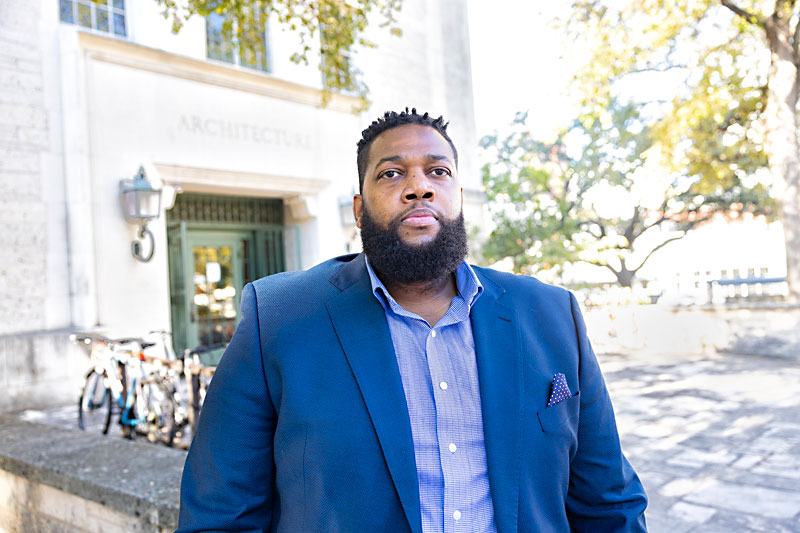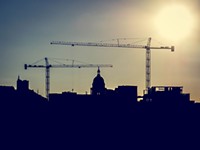UT Architecture Fellowship Explores Race in Spaces
Environmental psychologist Todd Brown to teach workshops on designing for inclusion
By Lina Fisher, Fri., Oct. 1, 2021
Sometime in the fall of last year, the meme of the day circulating Twitter was "gentrification font," the universally recognizable sans serif of house numbers in a changing neighborhood. That immediate association conjured from such a simple visual cue – affluent white newcomers in pristine Range Rovers – is called a "socio-spatial imaginary," and it's the focus of environmental psychologist Todd Brown, the sixth recipient of UT-Austin School of Architecture's Race and Gender in the Built Environment Fellowship.
As part of the fellowship, Brown, who holds degrees in both architecture and public health, will teach a series of workshops to landscape architects, interior designers, urban planners, and more called "Designing for Inclusion and Socioracial Sustainability" this semester, in which he'll apply a social and environmental justice lens to existing projects. The fellowship was established in fall 2016, with the goal to "support the development of future scholars whose work centers on the relationships and intersections between race, gender, and the built environment" – intersections which are the focus of Brown's interdisciplinary approach.
Environmental psychology, he explains, explores the psychosocial relationship between people and the environment, with the environment being a tangible space – a building, neighborhood, or park – or even something as amorphous as social media. He hopes to teach budding architects new approaches to development that foster a sense of inclusion. "Instead of gentrification, it's community improvement that gives residents some type of ownership in the redevelopment process."
Brown's dissertation at the City University of New York Graduate Center, in which he interviewed Harlem residents about their relationship to the neighborhood, found that small environmental cues – the size of windows in a brownstone, or if trash is tidy or scattered – invoke powerful assumptions about the race, gender, health, and politics of a community. During some of his interviews, older residents recalled how access to public parks was different 20-30 years ago. "They would tell me, 'This gate used to be open 24 hours a day, but then they welded it shut.' For them it was a sign of gentrification, because now, as access to [the park] is being restricted, yes, it's still a public park, but it's become privatized to some extent. ... For the safety of the newer residents they're trying to remove these 'undesirable elements.'"
Architects can play a role in reinforcing or mitigating this sense of exclusion. When designing affordable housing, for example, balconies in the market rate units and not in affordable units can make residents feel they "don't have a sense of ownership or a sense of accessibility with where they're living," Brown said, "just by access to individual green space or the lack thereof." Conversely, in gentrifying neighborhoods, "Luxury buildings become like walled fortresses with security features, and the building clearly screams, 'This is not for people in this area.' Those types of things can signal negatively to people in the community."
Brown's goal is to design for inclusion, since "historically, we were always kind of trained to view the architectural user as the white, able-bodied, privileged male. A 60-year-old, lower-income Black woman may come into a space and perceive it far differently." He acknowledges that architects don't control rents, and there are other exclusionary systems at play. "But I think the job for the architect is to serve as an advocate for the community that they're designing in. ... It's a good step in the right direction when you start to consider a diversity of users and different experiences. That's what I'll be hopefully bringing to the table."
Got something to say on the subject? Send a letter to the editor.









